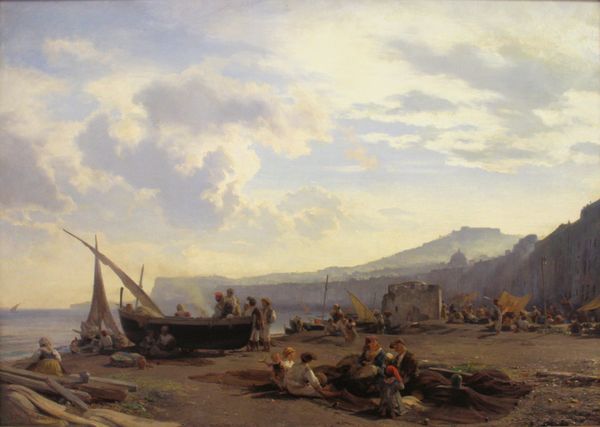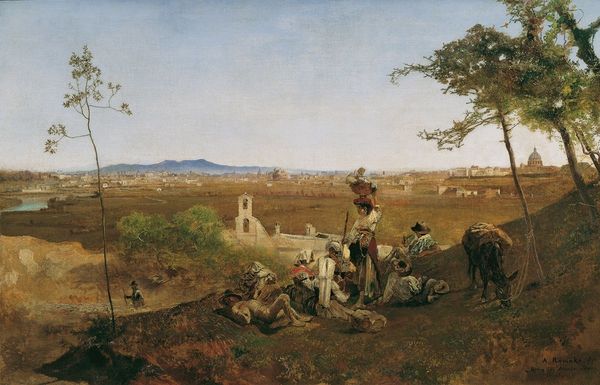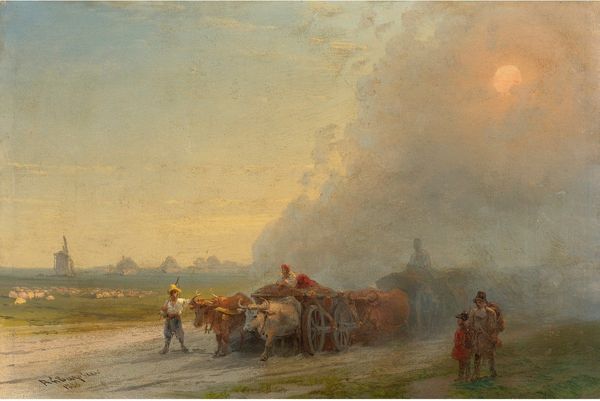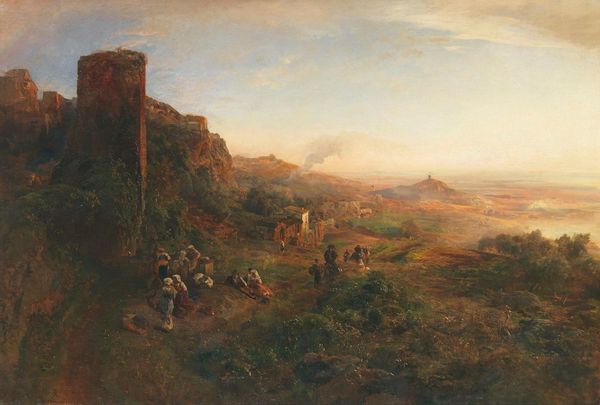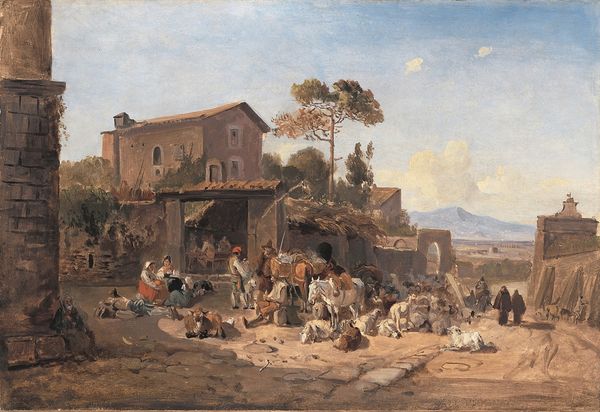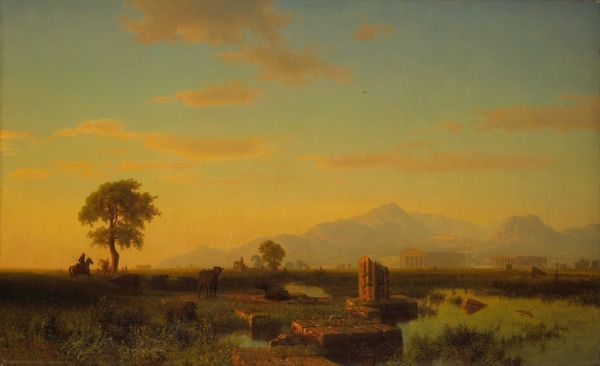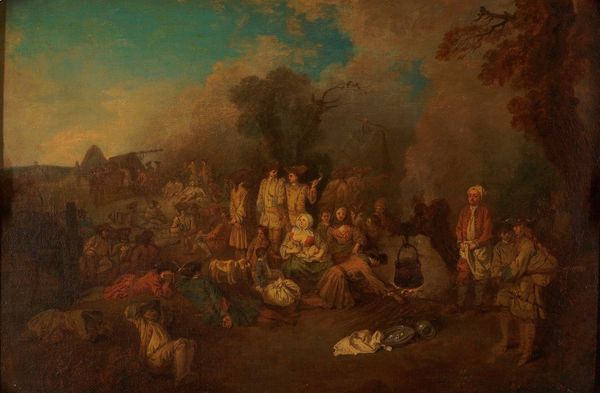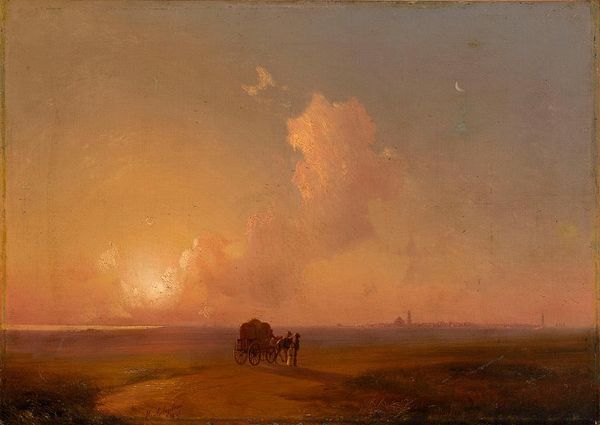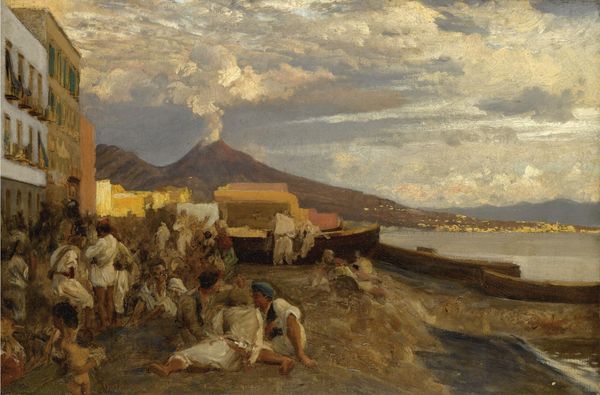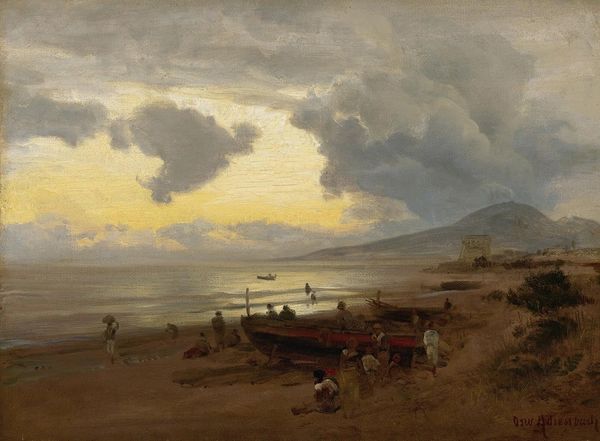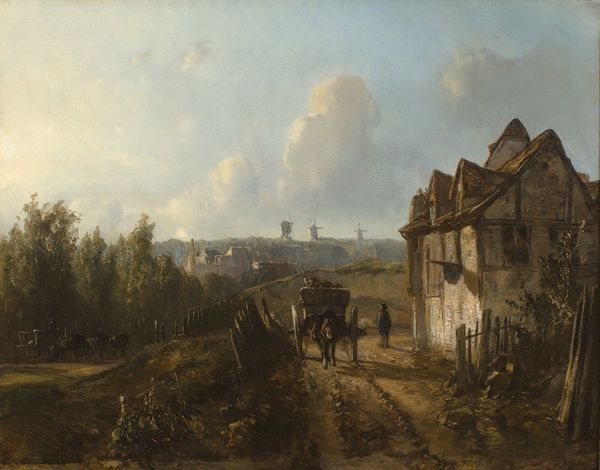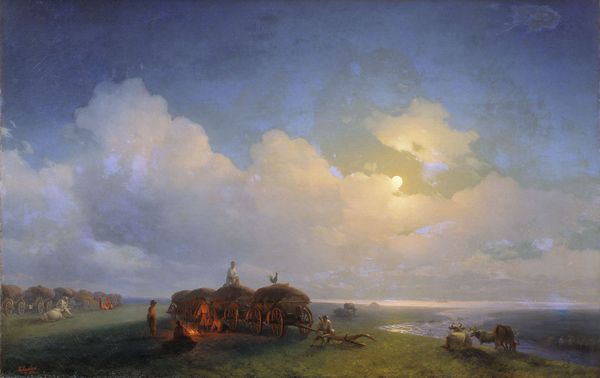
Copyright: Public domain
Editor: Oswald Achenbach's "The Mole of Naples," painted in 1859 using oil on canvas. It depicts a vibrant, bustling scene. There’s almost a sense of theatrical staging to the composition – what strikes you most when you look at it? Curator: Initially, the masterful orchestration of light. Achenbach deploys a tenebrist approach, guiding the viewer's eye from the darker foreground to the luminous expanse of the bay and the pastel sky above Vesuvius. Note the almost palpable textural variation achieved through the application of paint – from the smooth rendering of the sky to the impasto employed to define the figures. Editor: So, it’s not just the light itself but the technique of applying the paint that creates this depth? Curator: Precisely. Consider how Achenbach uses the materiality of the oil paint to create a visual language, structuring a formal contrast between the idealized romanticism of the scene and the realism used in genre painting for details of daily life. Does the use of plein-air technique evoke immediacy? Or do we have something different here? Editor: It does lend an immediacy to the work; even though he clearly built up layers in the studio afterward. Were the figures added later? The scene doesn’t feel completely cohesive. Curator: It’s possible. Achenbach expertly juxtaposes these stylistic approaches, and asks if we can see this as an indication of tensions, or oppositions. Note how the placement of elements of high art mixes with a landscape dominated by an active volcano; what visual arguments are being staged through formal and compositional arrangement? Editor: I see how breaking down the formal elements really highlights the tension and conflicting stylistic choices within the whole. Thanks! Curator: Indeed, these intrinsic qualities of art expose some questions, not simple answers, and enable further engagement.
Comments
No comments
Be the first to comment and join the conversation on the ultimate creative platform.
